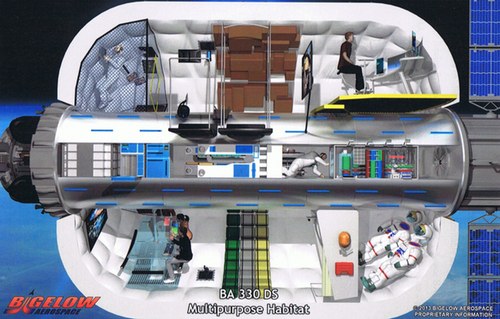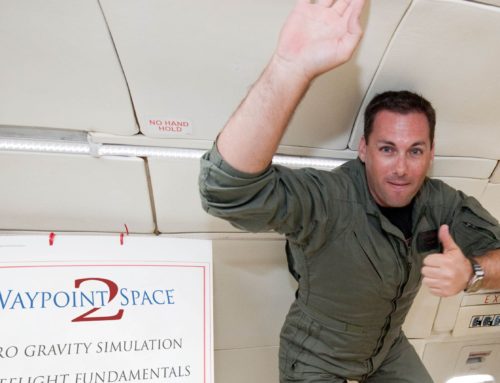A report prepared by Bigelow Aerospace for NASA concludes that the commercial approach that the space agency used successfully for developing commercial cargo transportation to the International Space Station should also be applied to developing transportation beyond Earth orbit, including in the vicinity of, and to the surface of, the Moon.
The report, prepared under a Space Act Agreement between NASA and Bigelow Aerospace announced earlier this year, is being formally released today at a press conference in Washington. It recommends that NASA pursue a partnership with industry to develop beyond-LEO transportation systems, given NASA’s constrained budgets and the record of success by NASA’s Commercial Orbital Transportation Services (COTS) program to develop launch vehicles and spacecraft to supply the ISS.
“America is facing a fiscal crisis of unprecedented proportions making the likelihood of increased funds for human space exploration highly unlikely,” states an advance copy of the report provided by the company. “Therefore, the only viable option for the U.S. to reach cislunar space is to leverage the efficiencies, innovations, and investments of commercial enterprises.”
The report specifically advocates an approach modeled on the COTS program, where NASA used funded Space Act Agreements (SAAs) to support the development of cargo transportation systems by SpaceX and Orbital Sciences. That led to service contracts with those two companies to transport cargo to and from the station. NASA is following a similar approach with its commercial crew program, using funded SAAs to support development of crewed systems, which it plans to follow up with contracts to complete development and certification of those systems and initial purchases of flights.
That approach, the Bigelow report argues, can allow NASA and the private sector to work together on exploration and commercialization of cislunar space, including the establishment of a lunar base, something NASA is not currently planning to develop for the foreseeable future. “Over the next ten years, it is very possible that if NASA can soon adopt some of the suggestions within this report in combination with current steps underway by NASA and the private commercial sector, a permanent, semi-commercial lunar base is achievable and for substantially less money than people would imagine.”
Much of the report is devoted to demonstrating that the capabilities to enable those plans will exist within the next few years, if not already today. The report examines some of the launch vehicles and spacecraft that could support cislunar development, ranging from NASA’s Space Launch System and Orion spacecraft to vehicles under development in the private sector and by other nations. “By 2017–2018, all of the destinations within our immediate neighborhood including low lunar orbit will again be accessible to humans,” the report concludes. “The physical craft that have been under development (some for more than a decade) will be ready to execute any of these missions.”
That suite of spacecraft includes Bigelow’s own vehicles. The report states that the company’s first two BA 330 expandable habitats, modules with an internal volume of 330 cubic meters once deployed in orbit, will be ready for launch by the end of 2016. Bigelow Aerospace is also working on a version called the BA 330-DS for missions beyond Earth orbit; this will be very similar to the basic BA 330 but with improved rad-hardened avionics and additional shielding, as well as a larger inventory of spare parts for deep space missions. A modified BA 330-DS would be capable of landing on a planetary body, like the surface of the Moon. The report also outlines additional hardware, including tugs and power modules, that could be used in conjunction with the BA 330-DS modules to support missions beyond LEO.
The report also makes the case for innovations beyond technology and contracting mechanisms. The Bigelow report argues that, for private companies to be involved in any joint venture with NASA in cislunar development, they must have property rights on the Moon or other bodies that are not available today under existing space law structures, a controversial subject in space policy. Companies “must known they will be able to (1) enjoy the fruits of their labor relative to activities conducted on the Moon or other celestial bodies, and (2) own the property that they have surveyed, developed, and are realistically able to utilize,” the report states. And, in a point emphasized in the report in bold, italic, and underlined type: “Without property rights, any plan to engage the private sector in long-term beyond LEO activities will ultimately fail.”
With a property rights system in place on the Moon, both NASA and industry would benefit, the report concludes. “By leveraging a property rights regime private sector facilities could be developed on the Moon which NASA could subsequently take advantage of for a wide variety of astronautics and scientific activities. What the Agency could never afford to do alone could become financially possible due to the husbanding of private and public sector investments and resources.”
By Jeff Foust
To see the original article CLICK HERE


